In the fascinating world of artificial intelligence, a new trend is making waves: AI time machines. These innovative tools leverage cutting-edge AI technology to create hyper-realistic avatars, allowing you to see what you might have looked like in various historical eras.
Moreover, the increasing interest in AI doesn’t stop with time travel. If you’re interested in restoring old photos to their former glory, be sure to check out our list of the Best Old Photo Restoration Apps. Join us as we journey through time and technology!
1. AI Time Machine-MyHeritage
MyHeritage’s AI Time Machine utilizes advanced machine learning algorithms to achieve this unique function. The technology behind it is called Deep Nostalgia™, which is powered by D-ID, a company specializing in video reenactment using deep learning.
The uniqueness of MyHeritage’s AI Time Machine lies in its ability to bridge the gap between the past and the present. Animating old photographs, breathes life into static images, providing users with a glimpse of their ancestors’ expressions and movements, and making history more tangible and personal.
However, like any technology that deals with personal data, there are potential downsides to consider. The use of AI in this context raises questions about privacy and data security.
While MyHeritage assures users that it does not share data with third parties, some may still have reservations about uploading personal photos onto an online platform.
Moreover, while the AI does an impressive job of animating photographs, it’s important to remember that the animations are simulations and not a true representation of how the individual behaved or moved.

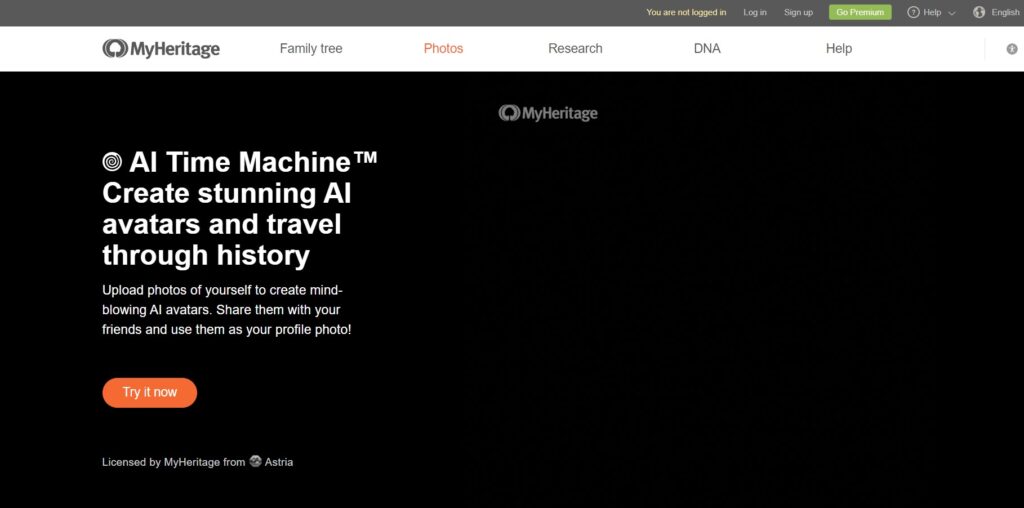
Check out this awesome website: AI Time Machine
You may also like: 13 Best Apps That Make You Look Older
2. Midjourney
Midjourney is an innovative platform that uses cutting-edge artificial intelligence to recreate historical events. It’s essentially a time machine, but instead of a physical machine, it’s a digital platform that you can access from anywhere.
Imagine being able to stand shoulder-to-shoulder with the founding fathers as they sign the Declaration of Independence, or watch as Cleopatra becomes the queen of Egypt. These are just a couple of the countless experiences you can have with Midjourney.
One of the biggest advantages of Midjourney is its ability to bring history to life. By using advanced AI algorithms, it recreates historical events in stunning detail. This immersive approach to history makes it more engaging and easier to understand.
Another advantage is the potential for education. Teachers can use Midjourney to supplement their lessons, providing students with a unique and interactive way to learn about history.
While the ability to revisit historical events is undeniably exciting, it also raises some serious questions. One concern is the potential to inadvertently alter aspects of history. While Midjourney’s AI is programmed to prevent users from changing major historical events, there is always a risk of unintended consequences.
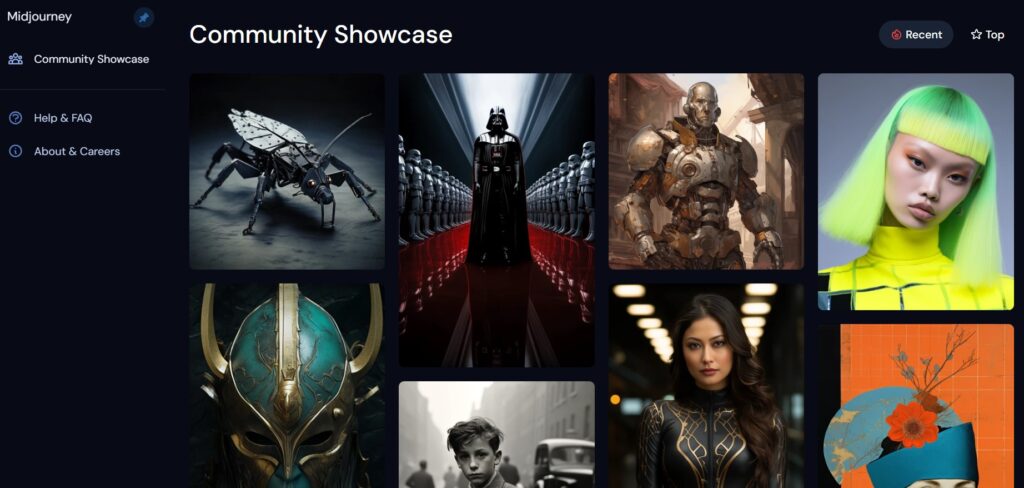
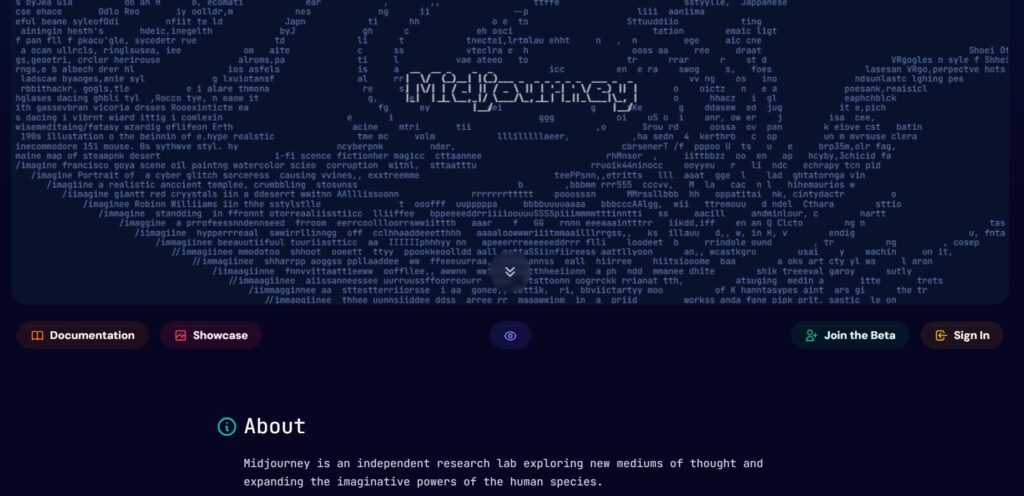
Check out this awesome website: Midjourney
3. Artbreeder
Artbreeder’s interface is intuitive and user-friendly, allowing even beginners to create stunning images with just a few clicks. The software offers a lot of customizability in terms of facial features, expression, coloring, and more, providing users with a high degree of control over the final product.
Despite its potential issues, Artbreeder stands out due to its unique capabilities. It is not just an image generator but also a platform for collaboration and exploration. Users can modify and combine existing images to create new ones, explore different styles, and even collaborate with other users on joint projects.
Overall, Artbreeder is a versatile tool that combines the power of AI and human creativity. It provides a playground for artists, designers, marketers, and anyone else interested in visual content creation. However, as with any tool, it’s important to use it responsibly and be aware of the ethical and legal implications.
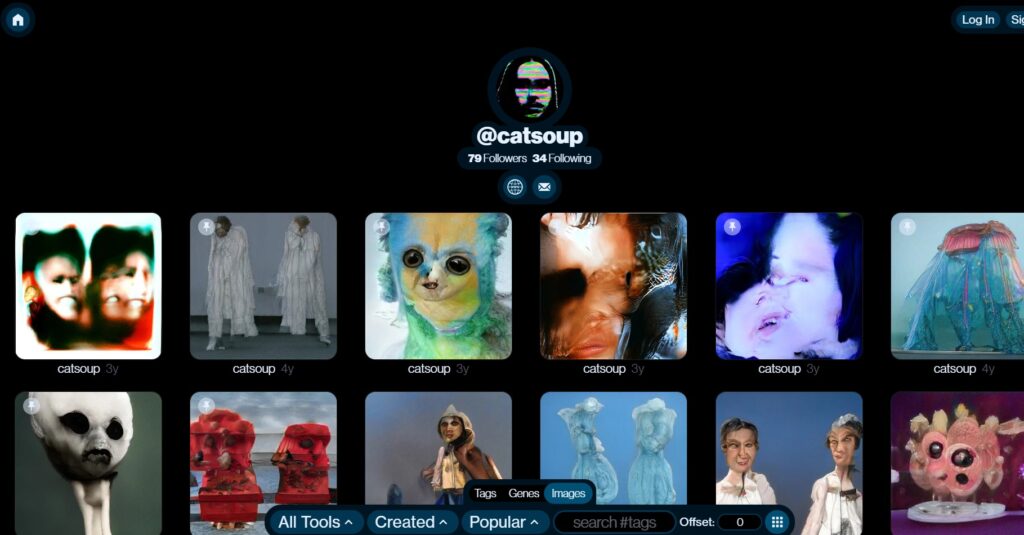

Check out this awesome website: Artbreeder
4. GANPaint Studio
Another strength of GANPaint Studio is its intuitive user interface. Even without any prior experience in AI or digital art, users can easily navigate through the tool and create stunning images. This makes GANPaint Studio a highly accessible platform, democratizing the use of AI technology for creative purposes.
However, GANPaint Studio has its limitations too. The major one is that the images generated are based on existing data, meaning they’re not truly original creations. This raises questions about artistic authenticity and originality.
Another potential downside is the ethical implications of altering images, especially regarding historical events or personal photographs. Misuse of this technology could lead to misinformation or misrepresentation.
Despite these challenges, GANPaint Studio stands out for its unique capabilities. It’s not just a simple image editing tool, but a platform that allows users to explore different periods and styles, creating a bridge between past, present, and future.
This ability to “time travel” sets GANPaint Studio apart from other AI tools, making it a fascinating option for artists, designers, and history enthusiasts alike.

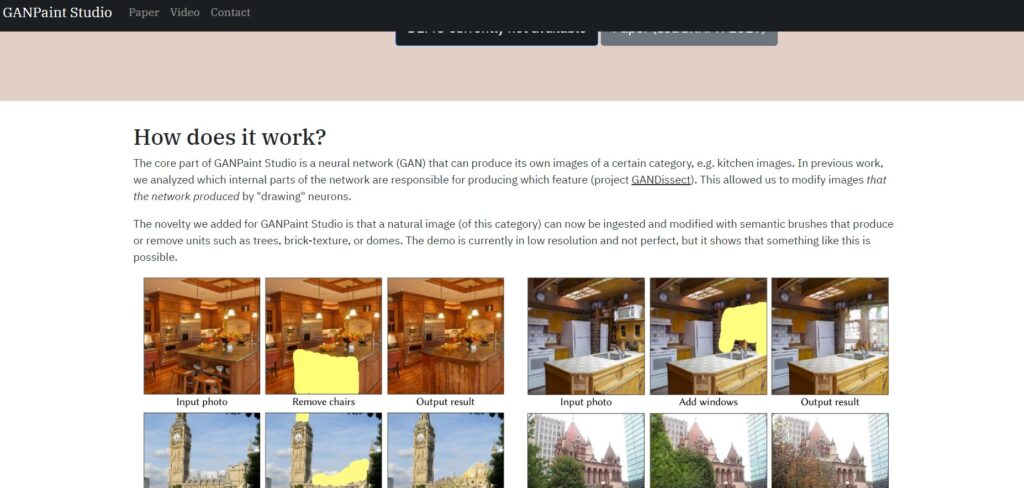
Check out this awesome website: GANPaint Studio
5. WOMBO
The magic behind WOMBO lies in its use of advanced AI algorithms and Stable Diffusion Tech. These technologies work together to analyze your uploaded image and then transform it based on the chosen historical era’s aesthetics. The result? A unique, AI-generated avatar that provides a glimpse into a different time.
One of the main strengths of WOMBO is its user-friendly interface. Generating your time-traveling avatar is as easy as uploading a photo and selecting a historical period. The tool is also impressively accurate, providing detailed and realistic transformations that truly reflect the chosen era’s style.
Another strength is the vast range of historical periods available. From ancient times to recent decades, WOMBO provides a broad spectrum of time for you to explore.
While WOMBO is undeniably captivating, it’s not without potential downsides. One concern is the storage and security of personal data. While the tool doesn’t share data with third parties, users may still be apprehensive about uploading personal photos to an online platform.
WOMBO sets itself apart with its unique ability to generate mobile images. This means you can easily share your historical avatar on social media or with friends. Moreover, the stable diffusion technology ensures that the transformations are smooth and realistic, adding an extra layer of authenticity to your time-traveling adventures.

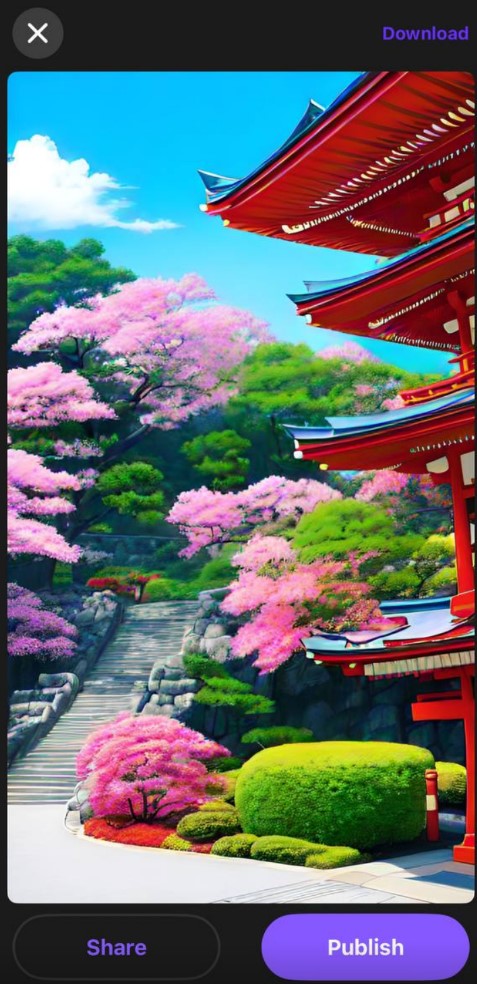


You may also like: Top 10 Apps to Remove Objects from Photos
6. Prisma
Prisma is more than just a photo-editing tool – it’s an artistic platform that uses AI to turn your photos into works of art. It’s like having a personal artist at your disposal, ready to recreate your photos in the styles of some of the world’s greatest painters.
But Prisma isn’t just about applying filters – it’s about creating a whole new image that reflects the essence of the original while adding an artistic twist. Each filter is an AI-powered transformation that analyzes your photo and intelligently applies brush strokes, color schemes, and textures that mimic specific art styles.
One of the standout features of Prisma is its vast library of over 300 artistic filters. This means you have a wide array of styles to choose from, ranging from classical to modern art. Whether you want to see your selfie as an Impressionist painting or your landscape photo as a Cubist masterpiece, Prisma has got you covered.
While Prisma is a fantastic tool, it does have a few drawbacks. The app requires an internet connection to work, which can be inconvenient if you’re on the go and don’t have access to WiFi. Additionally, while Prisma offers a free version, some filters are only available with a premium subscription.
Perhaps the most exciting aspect of Prisma is its ability to act as a sort of “time machine.” By applying art styles from different historical periods to your photos, you get a unique opportunity to see yourself and your world through the lens of the past.

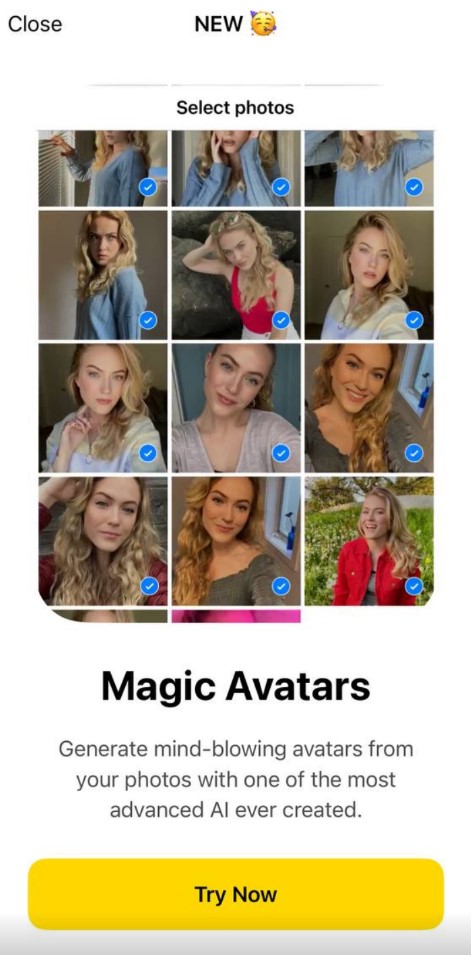


7. Photoleap: Photo Editor/AI Art
Photoleap, previously known as Enlight Photofox, is a powerful photo editing tool that combines the simplicity of use with the sophistication of high-end software. Its user-friendly interface and innovative features make it a standout in the crowded field of photo editing apps.
At its core, Photoleap is designed to make professional-grade photo editing accessible to all. Users can easily overlay images, manipulate textures, and create double exposures with just a few taps. However, the real magic of Photoleap lies in its ability to transform ordinary photos into extraordinary works of art through AI technology.
Photoleap’s AI-powered art filters are its pièce de résistance. It’s like having a time machine at your fingertips! With a diverse collection of historical filters, users can travel back in time and see themselves or their surroundings in the context of different eras.
The most significant advantage of Photoleap is its extensive array of filters and styles. This vast selection allows users to experiment and get creative with their photos, making each editing session an exciting adventure. The enlivening feature that adds motion to still images is also a fun addition that can bring your photos to life.
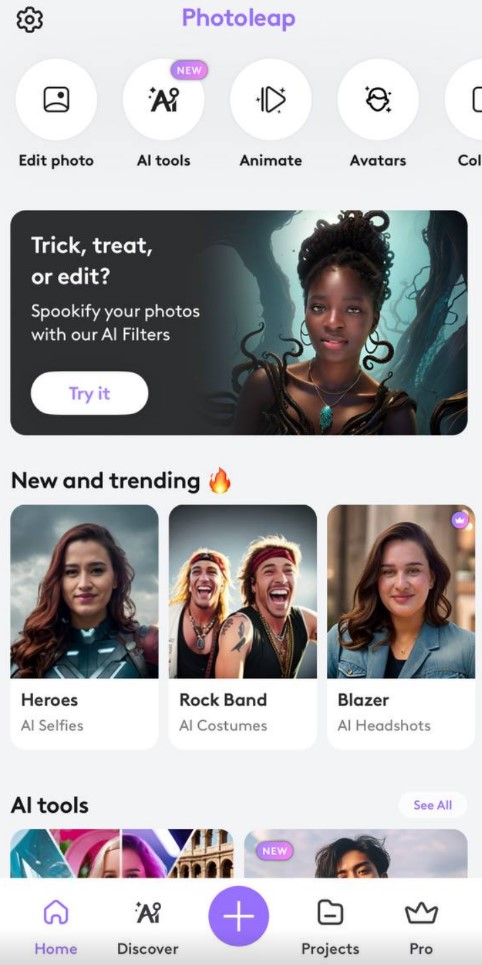
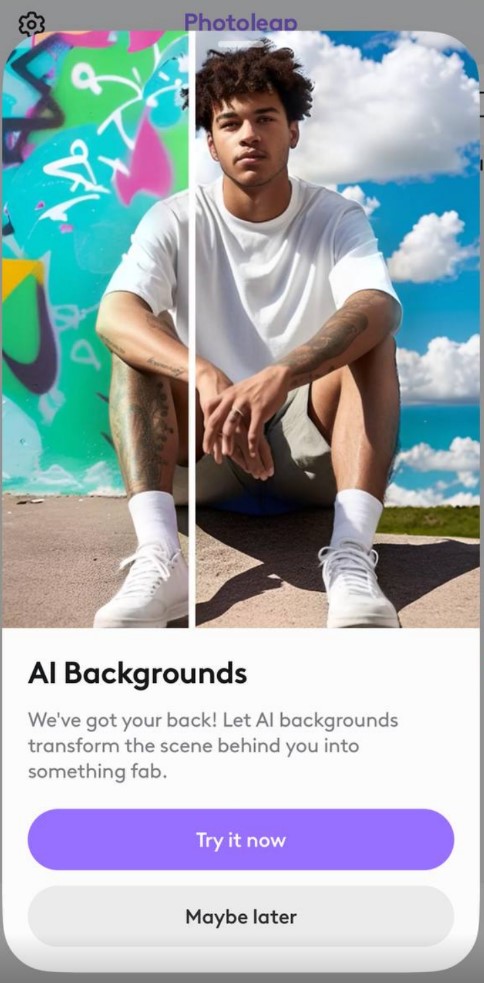


8. Starry AI
Starry AI is an innovative software tool that uses artificial intelligence to allow users to journey back through time. It’s a digital platform rather than a physical device, which means you can access it from anywhere, anytime.
One of the key advantages of Starry AI is its ability to provide an immersive historical experience. By using advanced AI algorithms, Starry AI can recreate specific moments in history with impressive accuracy. This could be anything from witnessing the signing of the Magna Carta to experiencing life in a medieval village.
Another advantage is the educational potential. Starry AI can be an invaluable tool for teachers, allowing students to explore history in a way that textbooks can’t match. By experiencing historical events firsthand, students can gain a deeper understanding of the subject matter.
While the benefits of Starry AI are undeniable, there are potential downsides to consider. For one, the accuracy of the historical simulations depends on the data fed into the AI. If the data is incomplete or inaccurate, this could lead to a skewed representation of history.
What sets Starry AI apart from other AI time machines is its commitment to accuracy and detail. The software uses a vast database of historical information, ensuring the simulations are as accurate as possible. Plus, Starry AI allows users to interact with the environment, providing a more immersive and engaging experience.
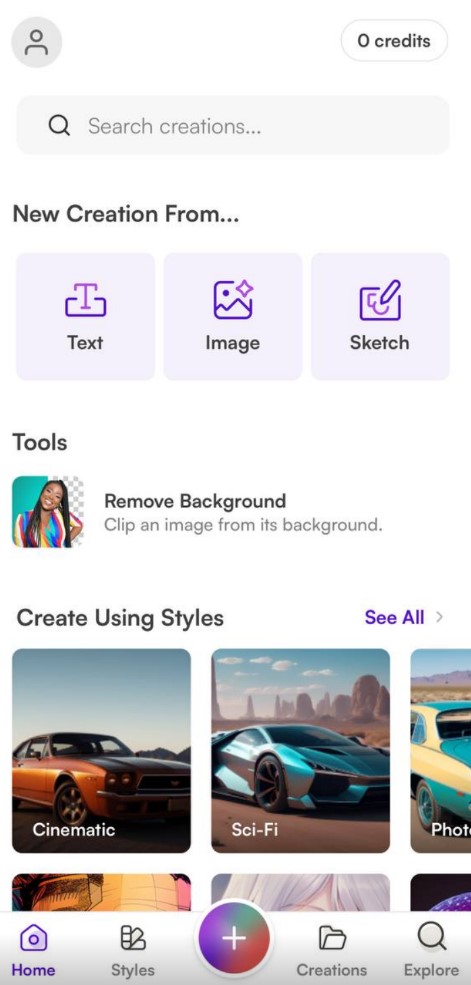



You may also like: Top 10 Deepfake Video Face Swapping Apps
9. Lensa: photo editor & AI art
Lensa is a powerful tool when it comes to restoring old photos. It can sharpen blurry images, correct off colors, and enhance overall image quality. But where Lensa truly shines is its ability to turn back the clock on your digital photos, making them look like they were taken in the past.
Whether you want to see yourself in the roaring ’20s or experience the psychedelic ’60s, Lensa’s AI technology intelligently applies filters that mimic the photographic styles of different periods. The result? A unique blend of the past and present that brings your photos to life.
One of the key strengths of Lensa is its simplicity. The interface is refreshingly straightforward, allowing even novices to navigate the app with ease. The design is user-friendly, and the controls are intuitive, making the process of editing and transforming photos a breeze.
Another major plus is Lensa’s extensive filter collection. From vintage to modern, moody to vibrant, the app offers a wide range of styles that cater to every aesthetic. And the best part? All this is available for free.
Despite its impressive features, Lensa does have a few downsides. For one, while the app itself is free, certain premium features require in-app purchases. This could be a deterrent for users looking for a completely free photo editing experience.










